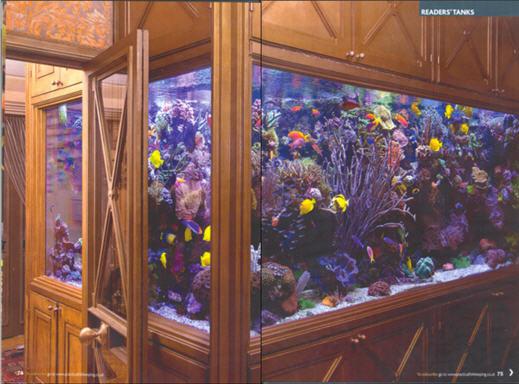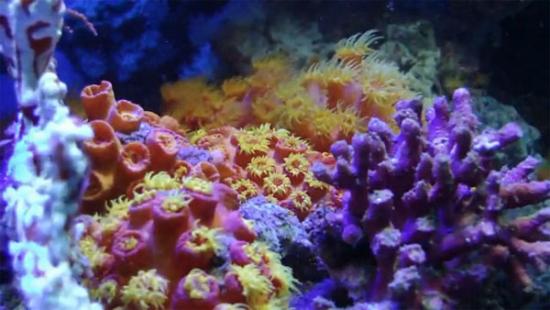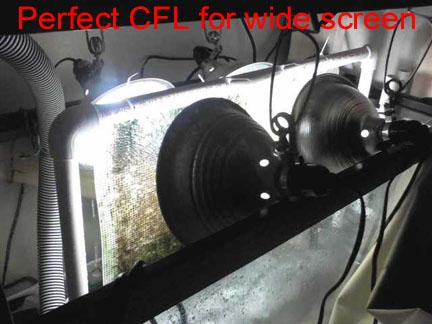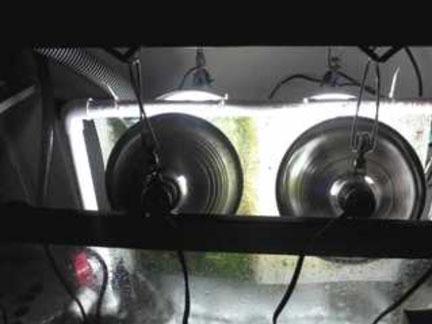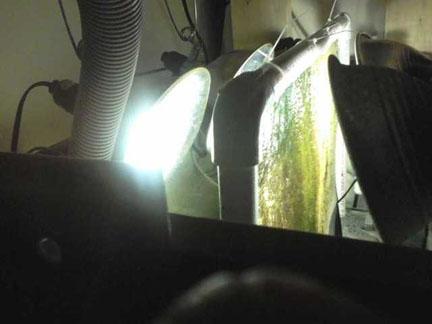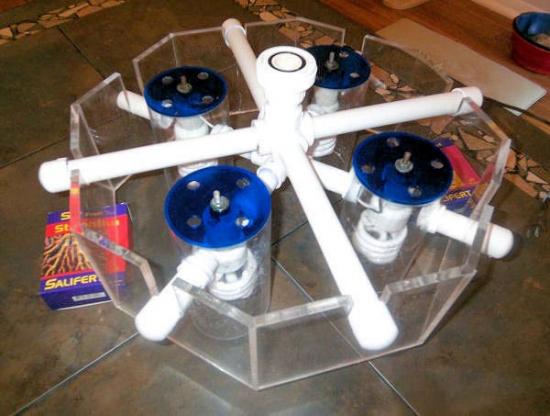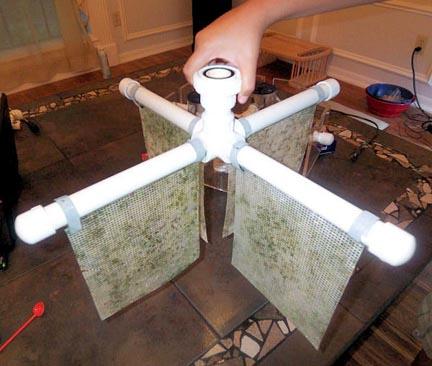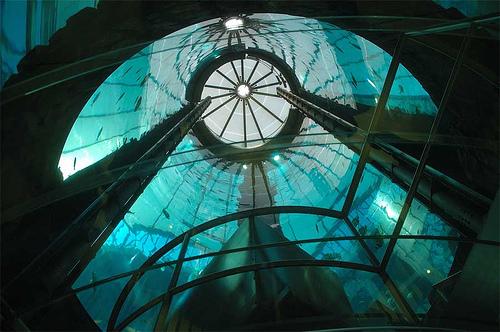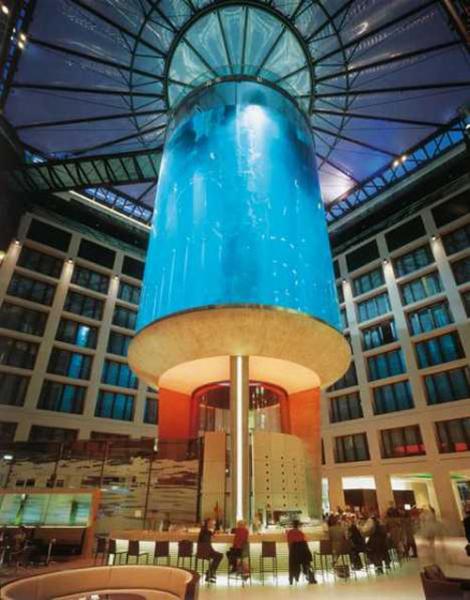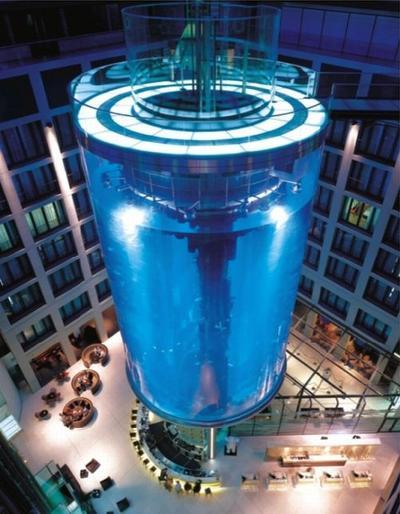-
Posts
11,637 -
Joined
-
Days Won
40
Content Type
Profiles
Forums
Gallery
Everything posted by CFOh
-
Flame Wrasse Courtship & Spawn scene
-
Now on Channel 8 C.L.I.F. 警徽天职
-
pmed..
-
Cleaner Wrasse Courtship & Spawn scene Video from Andrew Berry :thumbsup: A longer clip so you can see the courtship leading up to the spawning. The spawn happens in the last few seconds. Please note that they seem to be getting better at it--they didn't break the water's surface this time.
-
Love in Disguise Trailer
-
yr Purple dottyback is it refer to Pseudochromis porphyreus or Pseudochromis fridmani? Pseudochromis porphyreus is pretty common, shld be able get any LFS.. LCK201 shld hv Orchid dottyback (Pseudochromis fridmani) in stock. also Royal Gamma too.. For Bartlett Anthias.. can try CF (Coral Farm) both farm are quite near if you take taxi.. They both open @ 9am morning... Cheers BTW, Where r u from?... Pls find below above LFS address.. Good luck in yr shopping.. LCK 201 Tel: (65)8113 4618 201 Neo Tiew Crescent (LCK201) Singapore 718900 Coralfarm Aquaristic Pte Ltd 60 Lim Chu Kang Lane 6F Lim Chu Kang, Singapore 71, Singapore 6332 2928
-
-
David Saxby's Reef Aquarium Below pics from Practical Fishkeeping Issue 9 September 2009 Below r some info on setup, specification & review on David tanks in pdf format.... http://www.theaquariumsolution.com/files/Technical%20review%20of%20David%20Saxbys%20system2.pdf Aquariums - David Saxby's Reef Aquarium
-
Below articles from TFH Magazine A Freshwater Aquarist’s Guide to Marine Aquariums A longtime reefer provides the necessary information for fishkeepers with no marine experience to get off to a great start in the saltwater side of the hobby. Most of us in the marine hobby started out keeping freshwater fish. We happily kept to our cichlids or livebearers and thought to ourselves, “Let the saltwater people deal with their overpriced hassle of a hobby.” Or, we wanted to keep a marine tank but were intimidated by everything we heard about the saltwater side of the hobby: It costs too much money, requires a lot more maintenance, involves expensive fish, and so on. Many of you who have never dared to venture into the world of marine aquaria can probably relate to this. Let me start by saying that there is nothing wrong with sticking to freshwater setups. Marine aquariums do not necessarily represent a more advanced level of the hobby. They are not better or more interesting than a well-planned freshwater setup, especially when planted tanks are considered. While there are a few erroneous contentions about marine tanks, there are also serious considerations that should be taken into account before committing to a marine setup. Let’s investigate what the marine hobby will require of you in order to be successful. You’ll know what questions to ask yourself and your local fish store should you decide to plunge into the marine side of the hobby. The Tank There are numerous ways to set up a marine system, and I could easily write an entire book just on various setups and the pros and cons of each. The choice of tank and, in particular, its size, is the first budget-related question you must wrestle with. Larger tanks are not only more expensive, but the cost of the live rock, lighting, skimmer, pumps, and other equipment go up drastically as the tank size increases. If one is opting for a reef rather than a fish-only setup, the cost of fully stocking the tank with various inverts can be truly astounding. For this reason, it’s best to do plenty of research. Cost out the various components before laying any hard-earned cash down on a large tank. A large tank might seem within your budget, but can you afford the light that will be necessary? What about the skimmer, sump, live rock, and power draw of the system? How about the salt mix needed for water changes? Can you afford to replace your metal halide bulbs twice a year? Be thorough and, most importantly, realistic. What is the financial reality for you if, due to an unforeseen disaster, you lose a 200-gallon tank full of inverts? Can you absorb such a loss and continue with the hobby? Can you afford to stock such a tank? Sometimes it’s far more rewarding to have a 12-gallon tank that is full of life and abundant, rather than a huge tank that is sparsely populated due to budget constraints. Chances are you have a few spare tanks lying around, or perhaps you’re thinking of converting a pre-existing freshwater display. For a simple fish-only setup, you needn’t look any further for your first marine tank—as far as the glass (or acrylic) box is concerned, at least. That being said, most marine systems these days make use of a sump below the main tank, which houses a protein skimmer, a heater, supplemental mechanical filtration, and often a refugium (a partitioned, protected area that allows small critters such as copepods to breed, and where macroalgae is often grown). It also adds to the overall volume and, therefore, efficiency of the system. This means that a drilled tank with overflows must be used, and this cost must be factored in during the planning process. While a sump is not mandatory, one is highly advisable for a system over 30 or 40 gallons, where larger protein skimmers are normally used. Lately, several manufacturers have introduced self-contained setups called nano cubes that range from 6 to 24 gallons. They sport an attractive, tight-fitting hood with power-compact lighting that is sufficient for many soft corals, as well as a pump and filter media. The glass on these units is a single curved pane, which wraps around three sides of the tank and is quite attractive. These units make great starter kits for a marine tank, but they often require small modifications to fit your needs. These include additional ventilation in the hood to prevent the lights from overheating the tank, more powerful or reliable pumps, and stronger lighting for certain inverts. However, they are definitely worth a look if one is considering a small marine setup. Lighting The first thing you’ll likely wonder is if the lighting from your current freshwater tank will suffice for a marine tank. If you’re considering a simple fish-only system, the answer is yes. If the tank is small and you’re only considering some hardy, lower-light soft corals such as mushroom corals and star polyps, a power-compact fixture will be sufficient. Upgrade kits, which contain everything needed to change a normal fluorescent fixture to a power-compact fixture, can be purchased online and at specialized local retailers. Stony corals and giant clams will require light fixtures of considerably higher wattage. But if you’re thinking of upgrading your lighting, this can be one of the most confusing and frustrating aspects of delving into the marine hobby. Many purchase incorrect lights before getting to the proper ones, doubling expenses. It’s a good idea to do your research and talk to other hobbyists before you start spending. People converting to saltwater tanks often consider metal halide lighting. While an in-depth discussion of lighting is beyond the scope of this article, some points should nevertheless be covered. A larger reef full of stony corals, lit by several 400-watt metal halides, can be staggeringly expensive to operate, not only due to initial costs but energy requirements as well. A small tank with a few small power compacts and some soft corals will cost less and have a much smaller effect on your monthly power bill. But when more light-demanding inverts are involved, more light is needed, and your choices become myriad when all the various manufacturers and levels of output are considered. Filtration The powerheads and power filters you have lying around could come in handy to help circulate water in your marine tank, but the actual biofiltration on your marine tank will be accomplished with live rock and sand. A protein skimmer will remove dissolved pollutants before they contribute to the bioload. I highly recommend a protein skimmer, especially for tanks over 30 gallons or so. These units, which remove undesirable organics from the water column and help oxygenate the water, are highly beneficial workhorses in most (but not all) successful systems. Wet/dry filters, much in vogue back in the day, have more or less fallen out of favor. They produce nitrates but lack the denitrification ability that live rock affords. Maintenance Time I can’t tell you how many times I’ve heard that saltwater tanks require a lot more maintenance time. This is mostly untrue. As a matter of fact, a properly set-up marine tank often requires less maintenance than a freshwater system of the same size. This isn’t to say that every marine tank falls into this category, but it’s hardly a foregone conclusion. The live rock and sandbeds that we use in a modern marine system enable most sensibly stocked tanks to go a full month or more between modest water changes, and these can often be much smaller than those employed for most freshwater systems. In a freshwater system, the biofilter sustains nitrifying bacteria, which convert ammonia and nitrite into nitrates (nitrification). The nitrate is removed via water changes before it reaches toxic levels. Freshwater aquarists must do these water changes (often on a large scale) to keep nitrates in check. In a marine system, the live rock goes a step further and converts the nitrates into nitrogen gas via denitrification. This gas leaches harmlessly out of the system on it’s own with no interference from the aquarist. This means that a marine system comes much closer to a self-contained, self-regulating system than freshwater tanks. Water changes are our main tool for controlling nitrate in a freshwater system, but not so with a marine system. In short, a freshwater tank requires more work to eliminate toxins from the water than a marine tank. While various parameters do need to be monitored in a marine system, even a 120-gallon full of stony corals will only require a few minutes a day to keep things in check. Water changes must be carried out regularly, but as stated above, this happens with less frequency, and the percentage of the change is smaller. Protein skimmers need to be cleaned now and then, but so does a canister filter, undergravel filter, or power filter on a freshwater tank. Larger tanks take longer to maintain, just as with freshwater aquaria, and while a marine tank may average a few extra minutes a day, the difference is hardly jaw dropping. To this day, the most maintenance-intensive tank I’ve owned was a 180-gallon freshwater tank full of large Central American cichlids. No marine tank, even those in the same size range, has come close. Hardy Marines Many aquarists are concerned that saltwater fish are fragile, and they can be if you’re a glutton for punishment and pick fragile fish. The fact is that there are many hardy, long-lived marine species available at your local fish store. This isn’t to say that you can throw quarantine procedures out the window, however, as practicing proper quarantine technique is essential to your success as a freshwater or marine aquarist. When sensible husbandry practices are employed and hardy species are selected, there’s no reason why you can’t experience the same success you’ve grown accustomed to as an experienced freshwater keeper in the saltwater side of the hobby. There are many references available to help you select hardy species, which you can find at many book retailers and fish stores. You’ll find many species of fish for sale that are hardy and likely to thrive, but there are also plenty that rarely adapt to captivity and should be left in the ocean. Avoid these species, and pick out those best suited to the small piece of ocean you’re considering. The mistake many beginning marine aquarists make (and, frankly, many of the more advanced ones as well) is becoming smitten with a beautiful fish and making an impulse purchase without doing any research in regard to its suitability to captivity or experience level required. For instance, many powder blue surgeonfish and mandarin dragonets have been purchased and subsequently lost as a result. This is not only unfair to the fish, but the confidence of the aquarist often suffers as well, leading to frustration. An opinion forms about the difficulty of the marine hobby that often persists, which is unfortunate and totally avoidable. There are plenty of marine species that do wonderfully in captivity and have great survivability. Why waste energy, time, and money on species that are chronically difficult or even impossible? Your guess is as good as mine, but hobbyists (and ex-hobbyists) who do exactly that are, sadly, commonplace. Easy Inverts Many are also concerned that inverts are expensive and difficult to keep, but this is not always the case. While there are species of invertebrates sold that should be left in the ocean, there are a variety of species that are very practical to keep. Again, research and restraint while making purchases go a long way toward success in invertebrate husbandry. Some corals are hardy and undemanding. Many others do very well but still require expensive lights, multiple costly pumps to provide necessary water movement, and an experienced keeper. Some corals are simply fragile and rarely do well in home aquariums. Green star polyps and mushroom corals are examples of corals that are extremely easy to maintain. These provide a nice, confidence-building foot in the door for budding reef aquarists. Marine Tanks Are More Expensive I’m afraid I cannot refute the fact that marine tanks are expensive. The cost and potential scale of financial loss should something go wrong can reach absolutely insane proportions as the size of the tank increases. A member of a reef aquarium forum once had a signature that read, “My sanity, as well as my wallet, lies at the bottom of my reef tank.” While many might chuckle, this can become more of a reality than we’d like to think. With so many variations in livestock, equipment, and methodology, it’s impossible for me to make a blanket statement with regard to how much more expensive a marine aquarium is. The cost difference can range from a few extra dollars a month for a small or simple setup to many thousands of dollars extra when initial setup costs and monthly expenses are considered. The most important considerations are the size of the tank and whether your setup will be fish only or one of the many possible reef variations. Each requires different equipment, time investment, and upkeep costs. You often have a sump to consider, which is absent from most freshwater setups, a protein skimmer that gets larger and more expensive as the size of the tank increases, and extra pumps (to provide proper circulation for corals) that again get larger and/or more numerous as tank size increases. Live rock is heavy and sold by the pound, and lighting can run from under a hundred to many thousands of dollars depending on the size of the tank and the light intensity required for the invertebrates being kept. When reefs are considered, the amount of livestock it takes to create a full, abundant look is drastically different between a 20-gallon and a 200-gallon tank. It’s literally the difference between shelling out $300 vs. $3000 or more in initial cost. The monthly upkeep cost also increases significantly depending on the size of the system and the needs of the organisms within it. A reef tank with multiple pumps running 24/7, a metal halide fixture, and sometimes a chiller to keep things from overheating in the summer, can greatly increase your power bill—by hundreds of dollars even, so be warned. Is your living situation stable? Moving a large aquarium of any type is exhausting work, but it is possible if some planning takes place. If your move means the tank must go, you will never recover your initial investment in the setup. Tanks, live rock, and critters can be sold off, but be prepared to take a soaking. Of course, the magnitude of this loss increases with the size of the tank. Bigger Is Better The idea that bigger is better is old-school thinking. It simply does not always hold true. If you’re thinking of converting your current 30-gallon freshwater tank into a marine display, go for it! Or, go as large as your time, space, and funds allow. By far, the most trouble-free and enjoyable tanks I’ve ever maintained were several small nano tanks. One of these was a 7-gallon nano reef on my desk at work, and the other was a 12-gallon nano reef system I had at home. The small size of the tanks meant that a skimmer wasn’t required. They made less noise, required less cost, took up less space, and involved less upkeep. Water changes on a small tank are so easy and quick that it makes a skimmer superfluous. Filtration was accomplished with a few pounds of live rock and a small power filter with the filter media removed, which provided just the right amount of circulation in the tank. I change out a gallon or two of water once a week. This process took no longer than two minutes. I would also clean the glass daily using a small magnetic cleaner, a 20-second operation that more or less wrapped up my daily maintenance. Since the tanks had tight-fitting tops, evaporation was minimal, so fresh water only had to be added every few days—another short, 15-second process. A few hardy soft corals, a few shrimp, and a single hardy orchid dottyback lived in my work tank for several years. A small upgrade in the light fixture was all that was needed to keep hardy corals. I worked four-day weeks, and the tank was no worse for wear after being left alone over extended weekends. The point here is that a small, well-stocked, and healthy system that isn’t a cause of financial stress is much more desirable, enjoyable, and impressive than a large, sparsely populated, poorly maintained money pit. A smaller tank also represents a much smaller risk should disaster strike or when a move forces a hiatus from the hobby. Be realistic with yourself, and choose wisely! Vacation A marine tank, especially a complex reef setup, is far more vulnerable to mishaps than a freshwater setup during vacations (a time when Murphy’s Law loves to kick in). Saltwater setups are much less bulletproof because of the multiple pumps often present, protein skimmer, calcium reactor, chiller, very hot running lights, and more complex plumbing often employed, along with the delicate nature of the animals that many aquarists choose to keep. The more complex the system and the more specialized the needs of the organisms within, the more you’ll loathe having to leave the tank alone. Be warned! A Careful Switch The knowledge gained from keeping a freshwater system will serve you well in the marine hobby. While there are complexities in marine systems that go beyond that of freshwater aquaria, simple saltwater systems are possible and just as rewarding. Research the animals thoroughly before you purchase any so you can choose species that are well suited to captivity. Also be realistic about your immediate and long-term budget, and you should have no trouble making the transition into saltwater aquaria. Good luck!
-
-
Not quite sure, but they normally refuge among corals..Shld be safe.. Base on "crustacea guide of the world" by Helmut Debelius pg 252 suggested below: feed on shelled molluscs also on algae. probably search via web for more info.. Cheers..
-
Serpent Sea Star, reef safe, It is scavenger and Carnivore..
-
Another new trailer on Pirates of the Caribbean... Pirates of the Caribbean: On Stranger Tides
-
Top view....
-
Feeding time...
-
Very nice table acro scaping...
-
Non-photosynthetic Reef Tank Below from Reeftools: Pieter's Deep in the blue This incredible non-photosynthetic coral tank, is another outstanding reef tank in Pieter’s arsenal. The colors are simply brilliant, and it is certainly a deviation from the average reef tank. A tank with a topic! something totally out of the box with only special corals which need darkness and food! Gorgonians, Rhizotrochus typusi, Dendronephthia’s,Tubastrea’s pieter-non-photo
-

Mega Powerful Nitrate and Phosphate Remover - DIY!
CFOh replied to SantaMonica's topic in General Reefkeeping_
Below for ReefTools Another articles on ATS from Santa Monica works Algae Scrubbers, an Interview with Santa Monica After the overwhelming response to our recently published article regarding algae scrubbers, we decided to do a followup. In a recent interview, Reef Tools posed Bryan, “Santa Monica” from algaescrubber.net with the following questions. 1. First off, how long have you been using algae scrubbers? August of 2011 will be 3 years. No waterchanges in that time, even when I overdosed iron. 2. Obviously algae scrubbers have been around for a while, what makes your new way of scrubbing any different from the previous methods of scrubbing? The “new” way is the waterfall. It’s mostly a simple way to grow algae, which does the filtering. 3. What were the problems that surged from the old style scrubbers, and how have you modified scrubbing to get the kinks out? The complexity of the old style was almost impossible to build. And, learning that you have to remove the screen for cleaning; this will keep the water from tinting (although it will still have lots of food particles in it.) 4. Now I know you are into no water changes while running a scrubber, why do you suggest that this is acceptable while running a scrubber? Because it’s how a real reef operates. There are no waterchanges on a reef; algae does all the filtering, and feeding. The beach does nothing for filtration. So as long as you add Cal, Alk and Mag, and maybe Str. Everything else you need is in the food you feed. 5. What about trace elements, such as amino acids, iron, strontium, etc. etc., is scrubbing something that needs to be supplemented with dosing? All the traces you need are in the food you feed, too, especially if you feed Nori (lots of iron). All the food, and traces, and anything else edible in the ocean comes from algae. Ask your nearest marine biologist, and he / she will confirm this. 6. So in your opinion, what are the keys to optimal scrubber filtering for a tank? Having bright light (even distributed) on both sides of a rough screen, with fast flowing water across the screen. Weekly cleaning too. 7. Finally, what would you say to someone who is on the fence about whether or not to try running an algae scrubber on their tank? Build a simple, cheap one (of the proper size), and see if it reduces your nutrients. A lot of people asked us to showcase some popular designs. Here are a few that Bryan considers to be “Very Good Examples: These pics are the way you want to make yours. No changes needed. These will provide the most filtering possible.” Wavecookies on the scrubber site built the best DIY non-acrylic scrubber Bryan has seen yet. Wide screens, big reflectors, and multiple bulbs are always better, and this has all three: A cool quad design from Vykhang on the scrubber site: For more examples and info, please visit http://www.algaescrubber.net/forums/viewtopic.php?f=3&t=26&p=130#p130 Cheers... -
Aquarium Delivered To Heron Tower below from londonist.com: Europe’s largest privately-owned aquarium
-
-
:bow: Berlin Hotel Offers World’s Largest Cylindrical Aquarium


